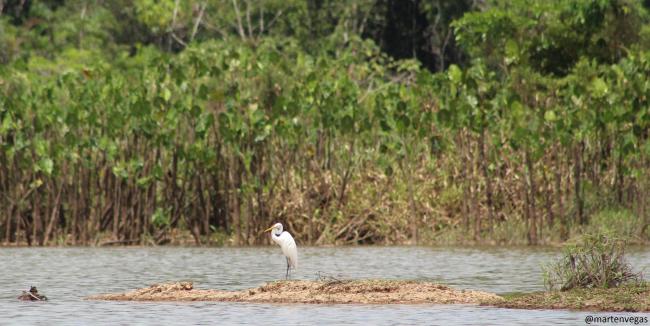Complejo de Humedales Cuyabeno Lagartococha Yasuní
Complejo de Humedales Cuyabeno Lagartococha Yasuní
- Country:
- Ecuador
- Site number:
- 2332
- Area:
- 773,668.5 ha
- Designation date:
- 24-08-2017
- Coordinates:
- 00°33'32"S 75°46'10"W
Carousel
CarouselMaterials presented on this website, particularly maps and territorial information, are as-is and as-available based on available data and do not imply the expression of any opinion whatsoever on the part of the Secretariat of the Ramsar Convention concerning the legal status of any country, territory, city or area, or of its authorities, or concerning the delimitation of its frontiers or boundaries.
The Site is located in the Amazon biogeographic region, and provides a corridor connecting the Cuyabeno Wildlife Reserve with the Yasuní National Park, one of the most important biodiversity hotspots in the world. This important complex contains several types of wetlands, including the Cuyabeno flooding forests, permanent rivers, lakes and pools. At over 770,000 hectares, it is the largest Ramsar Site in Ecuador. Around 1,500 species of plants, 600 species of birds and 167 species of mammals are found in the Site. It hosts ecological communities such as a community of moriche (or morete) palm (Mauritia flexuosa), and endemic and vulnerable plant species such as the terrestrial herbs Reldia multiflora and Nautilocalyx glandulifer. Particularly noteworthy is the presence of threatened aquatic mammals such as the Amazonian manatee (Trichechus inunguis), giant otters (Pteronura brasiliensis) and river dolphins (Inia geoffrensis and Sotalia fluviatilis). Communities belonging to six of Ecuador’s indigenous nations (Cofán, Kichwa, Huaorani, Shuar, Secoyas and Sionas) depend directly on the natural resources of the Site. It supplies fresh water and is important for activities such as tourism and fishing. Among the main threats to the Site are the exploration and drilling of oil and natural gas, hunting and fishing, the presence of invasive species, and changes in land use.
- UNESCO Biosphere Reserve
- Patrimonio de Áreas Naturales del Estado - Parque Nacional Yasuní
- Patrimonio de Áreas Naturales del Estado - Reserva de Producción de Fauna Cuyabeno
- Zona Intangible - Cuyabeno-Imuya
- Zona Intangible - Yasuní
- EC2332RIS_1806_es.pdf
- EC2332_map171124.jpg







